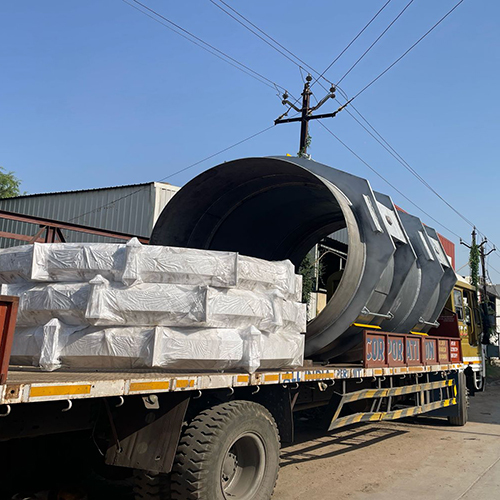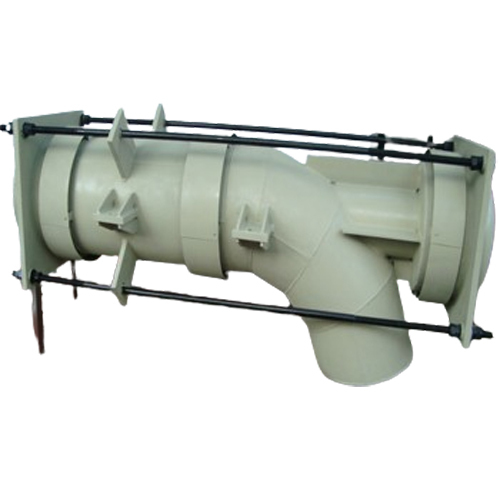Hinge Bellows
Product Details:
- Head Code Round
- Width Millimeter (mm)
- Surface Treatment Painted
- Length Millimeter (mm)
- Size 25 NB TO 5000 NB
- Product Type Hinge bellows
- Weight 3000 Kilograms (kg)
- Click to View more
Hinge Bellows Price And Quantity
- 1 Unit
- 50000 INR/Unit
- 50000.00 - 1000000.00 INR/Unit
Hinge Bellows Product Specifications
- Hinge bellows
- Others
- 3000 Kilograms (kg)
- Other
- Stainless Steel
- 600 Celsius (oC)
- Millimeter (mm)
- Steel Plants
- kgf/cm2
- Round
- Millimeter (mm)
- Painted
- Flange
- Others
- Millimeter (mm)
- 25 NB TO 5000 NB
Hinge Bellows Trade Information
- Vadodara, Gujarat
- Cash Advance (CA), Cash in Advance (CID), Cheque
- 5 Unit Per Month
- 4 Week
- Contact us for information regarding our sample policy
- Truck Load
- Asia, Australia, Central America, North America, South America, Eastern Europe, Western Europe, Middle East, Africa
- All India, South India, Central India, West India, North India, East India, Gujarat, Karnataka, Kerala, Lakshadweep, Mizoram, Meghalaya, Manipur, Andhra Pradesh, Bihar, Chandigarh, Daman and Diu, Goa, Jharkhand, Odisha, Punjab, Assam, Delhi, Dadra and Nagar Haveli, Andaman and Nicobar Islands, Arunachal Pradesh, Chhattisgarh, Haryana, Himachal Pradesh, Jammu and Kashmir, Madhya Pradesh, Maharashtra, Nagaland, Rajasthan, Sikkim, Tamil Nadu, Telangana, Tripura, Pondicherry, Uttar Pradesh, Uttarakhand, West Bengal
- ISO 9001 : 2015
Product Description
A Hinged Bellows (also called a Hinged Expansion Joint) is a mechanical component designed to absorb angular movement in piping systems while preventing axial movement and resisting internal pressure thrust. It consists of a metal bellows element combined with a hinge mechanism that controls movement to a single plane.
Detailed Description
-
Structure
-
A single corrugated metal bellows that provides flexibility.
-
Hinge plates and pins connected to the ends of the bellows.
-
The hinges are designed to take the full pressure thrust, so the bellows itself does not extend axially.
-
-
Function
-
Allows rotation in one plane only, accommodating angular deflection due to thermal expansion, misalignment, or structural movement.
-
Prevents axial movement and lateral displacement (when used singly).
-
Reduces load on adjacent piping and anchors because the hinge absorbs pressure thrust.
-
-
Usage
-
Typically installed in pairs or sets of three to absorb large thermal movements.
-
Common in pipelines, refineries, power plants, and HVAC systems where controlled flexibility is required without imposing high loads on the piping system.
-
Key Features
-
Absorbs angular movement only (single plane).
-
Hinge mechanism resists pressure thrust.
-
Requires low anchor loads compared to unrestrained bellows.
-
Compact, strong, and reliable for high-pressure applications.
-
Often used in combination with gimbal or universal joints for multidirectional movement.

Price:
- 50
- 100
- 200
- 250
- 500
- 1000+






 Send Inquiry
Send Inquiry Send SMS
Send SMS English
English Spanish
Spanish French
French German
German Italian
Italian Chinese (Simplified)
Chinese (Simplified) Japanese
Japanese Korean
Korean Arabic
Arabic Portuguese
Portuguese